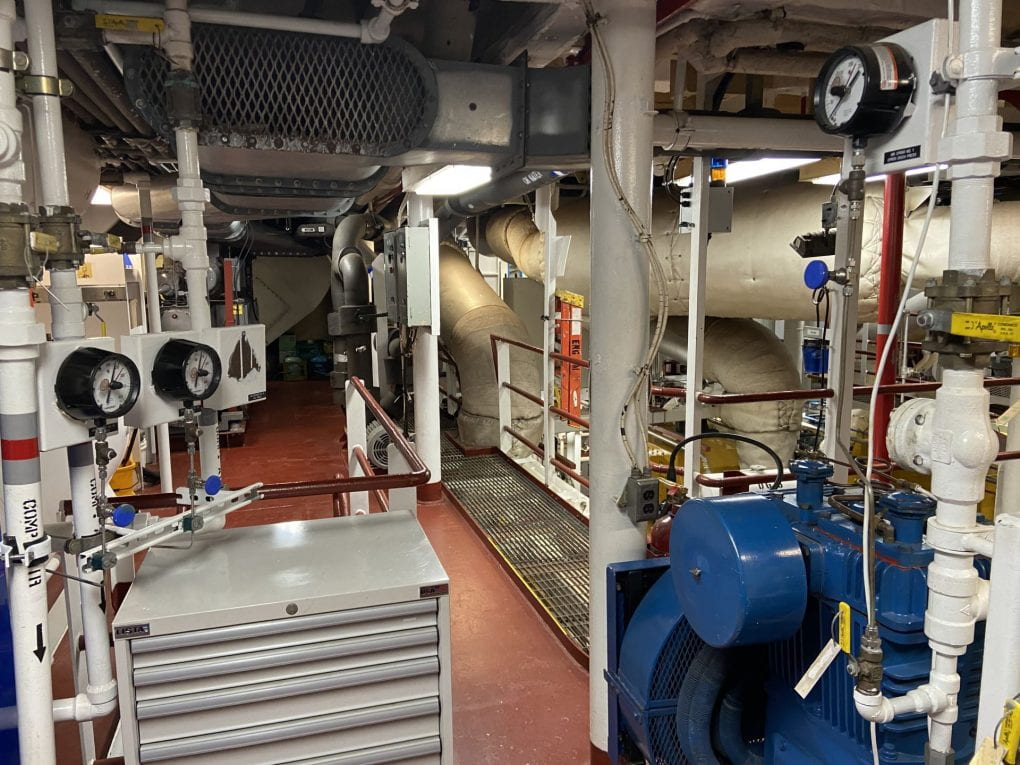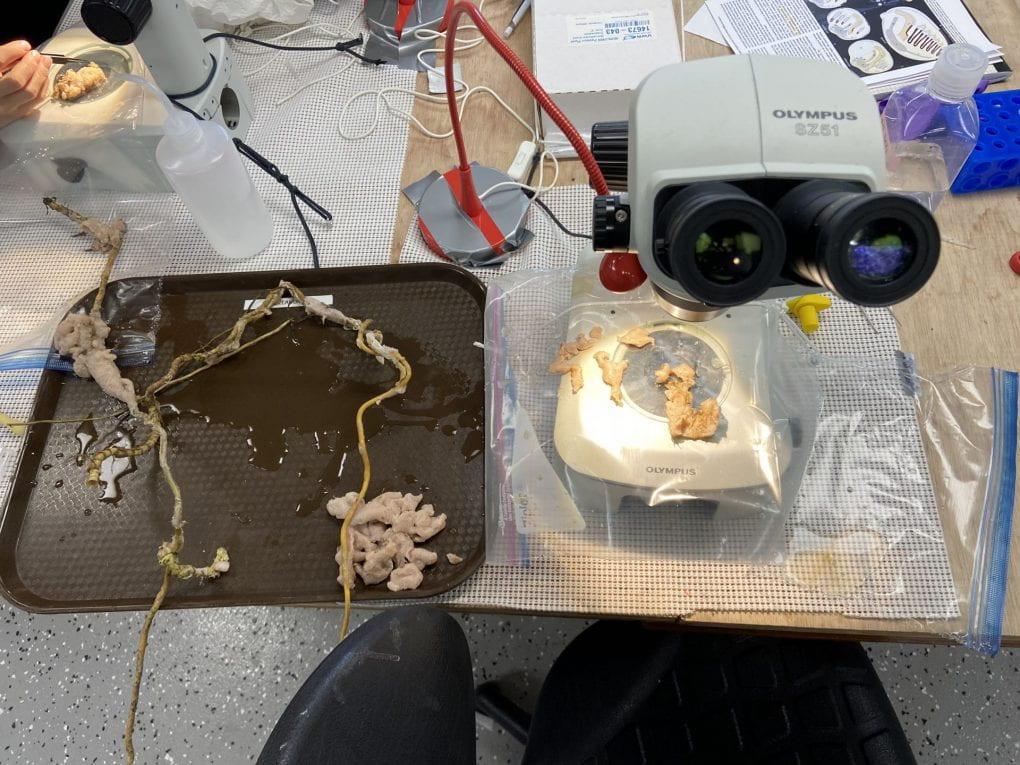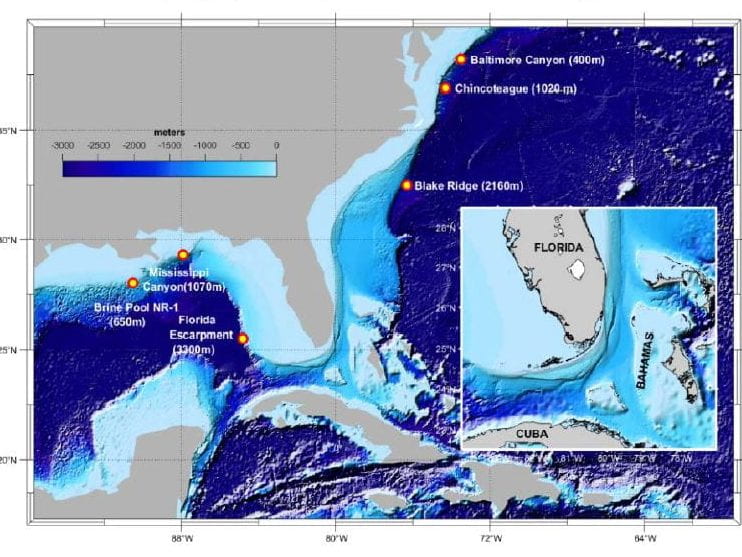
June 18th and 19th, 2021
Some of us stayed up all night, wanting to spend as much time together as possible before returning to our homes. For some this was routine on the night shift, for others, we tried to stay up as long as we could. Staying up was worth it to reminisce on the memories we’ve built on the past month, and see a beautiful sunrise to close out our expedition at sea. We all packed out backpacks and suitcases, cleared out our berthing rooms and swapped out linens, and gathered in the lab. Here we talked about future plans to meet up back home, hopes to see each other on the next cruise, and wished everyone the best in any path they pursue.
Together, we packed up all the science we needed to quickly ship including live organisms and thermally sensitive samples and creates piles near the door. First came the moving truck where we stocked our mail and made sure our science would get home safely. Then, the shuttles arrived, and we all waited on the deck of the ship, a waving goodbye party to our fellow shipmates. Eagar to get home and return to our own beds and lives, we departed the ship, but we knew we’d miss conducting science at sea together. Not all of us left as once however, some of us were flying out on the 18th, and the rest of us flew out on the 19th. For those that stayed behind, we had one more night aboard the ship to hang out and say farewell to the crew and ship.
Interview with the Scientists
How are our scientists feeling now that they’re back home?
“Definitely happy to be on dry land!! Loving the fresh tree smell!” -Laura Murray
“Glad to be in my own bed, but I miss the people and the science!” -Avery Calhoun
“Miss the people and work, but I think I miss the sound of bow thrusters going while I’m trying to sleep the most!” -Liam Patrick
“Enjoying the green but missing the 360 ocean and amazing sunsets” -Sinja Rist
“I literally cannot stop thinking about spending time out on the bow, the laughs, being on the ship with everyone!” -Carmen Sanchez-Reddick
“I thought I was over the dock rock but then I fell over tying my shoe yesterday and started to miss people and the boat all over again.” -Casey Barnard
“Enjoying the comforts of home, miss driving with Jason” -Ian Grace
“I had forgotten that the seasons kept changing without me, it’s suddenly warm and green in Washington. Miss the sunsets, dolphins, and people, among other things.” -Fiona McBride
“Happy to be home and sleeping, but missing sunsets on the bow” -Lauren Rice
After first contact with land, stressful connecting flights, and changing time zones, we all managed to return to our home states. With the TGT behind us, the ship will continue traveling at sea, down through the Panama Canal, and up the western US to return to its home in Seattle, WA. With the Arellano lab back in Washington, we began our late night journey back to the Anacortes and Bellingham areas, where we can rest before unpacking and getting ready to analyze our science! We’re so grateful to be part of an inter-institution project and really enjoyed working with other amazing scientists each with unique perspectives. Contributing to deep sea research and building strong connections on board has been a dream come true.
With that being said, I hope you all enjoyed the blog! If you want to continue following along with our projects visit the project’s main page here: https://sites.google.com/ncsu.edu/salt or follow our Instagram: @larvallab and Twitter: @LarvalLab
Thank you to:
The Thomas G. Thompson and crew for aiding us in our data collection.
All the scientists in the science party and on the submersible teams for working so hard throughout this cruise.
Western Washington University, University of Oregon, North Carolina State University for supporting our students and faculty in participating in this cruise.
University of Washington School of Oceanography for coordinating COVID-safety and communications.
Marine Biological Laboratory for providing quarantine housing pre-cruise.
NSF for funding this project.
Readers for your interest in our work!
If you are curious about me, you can follow me on Instagram: @djdavis123 or Twitter: @dexterity_no.
See you next time!





































